Growing a catharanthus from seeds at home

Catharanthus is a beautiful perennial plant. During the flowering period, it attracts enthusiastic eyes and adorns everything around. This flower feels great in conditions of high humidity and sufficient warmth, since Madagascar is considered its homeland. Today we will take a closer look at the catharanthus and learn how to grow it properly.
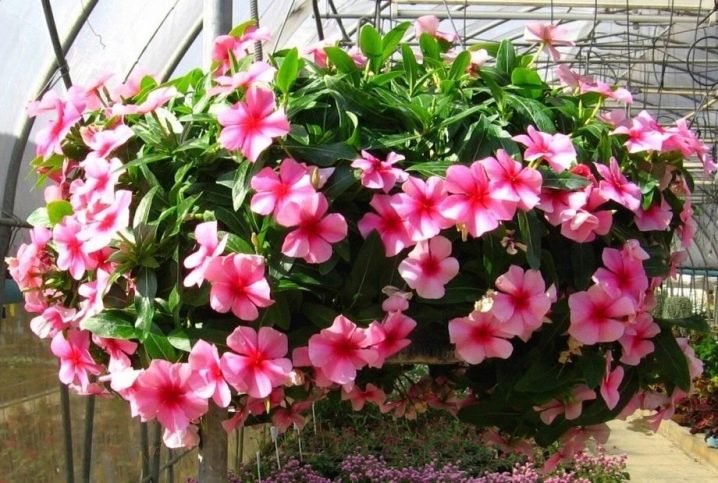
How to choose seed?
Katarantus is a plant loved by many flower growers. It is very often grown at home. There is nothing overwhelmingly difficult here - even a novice florist who does not have extensive experience in such procedures can cope with this task.
In order for the flowers to grow beautiful and healthy, it is very important to carefully consider the selection of the seed before planting.
It should be borne in mind that the choice of seeds for this crop is very diverse. In appearance, they are usually large in size, and also have a characteristic dark brown color. As a rule, seeds germinate in just a week. Disembarkation should be done in early spring.
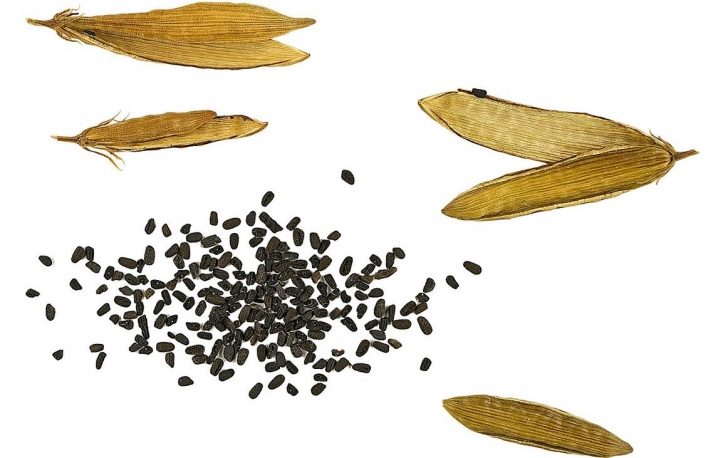
However, the catharanthus can be planted not only by the seed method. You can turn to another option - cuttings. To follow this method, you need a healthy catharanthus itself. From its upper part, you will need to carefully cut the stalk, and then lower it into the water. This procedure must be carried out in the spring. If the weather is favorable in the yard, the shoots will very soon give roots. After that, they can be safely planted in the soil already prepared for this, laid in a suitable container.
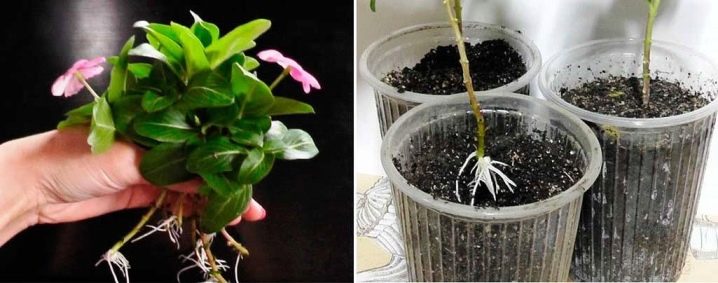
To get high-quality seed, it is permissible to turn to another method - dividing the bush. This option became possible, since the adult catharanthus lends itself well to division. The separated bushes grow very quickly and without problems and adapt to new conditions for them. It is customary to keep the rags either at home or on the street.
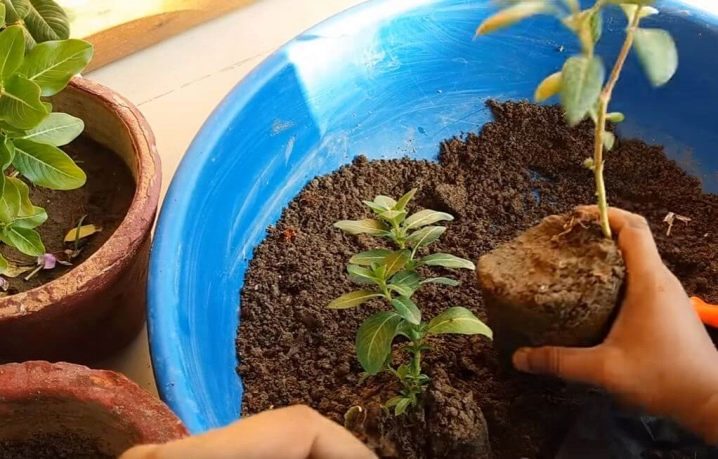
If you nevertheless chose such a popular seed as seeds, then you should stop at a certain variety of this crop. Let's consider the most popular and widespread options.
"Titanium"
This is an annual ampelous plant. The length of its shoots is usually from 50 to 75 cm. The bush itself can grow up to 15 cm. The leaves have an oval structure and a characteristic dark green color. Flowers are distinguished by a rich red color.
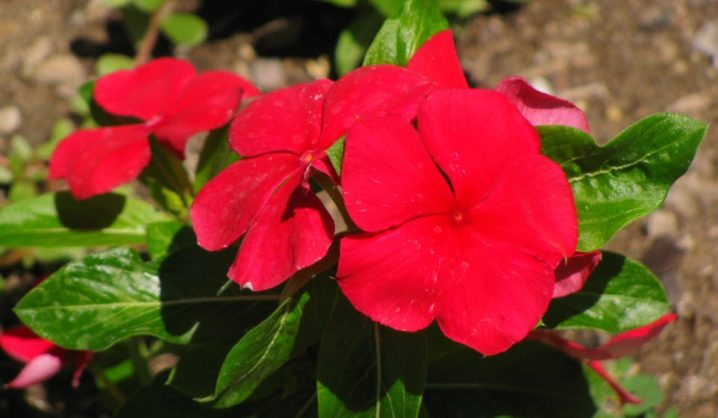
Blackberry Jam
This catharanthus looks very colorful and original. It is usually planted in small garden pots. This plant boasts endurance and resistance to arid conditions. Its flowering period begins in June. It can be located in partial shade or in the sun.
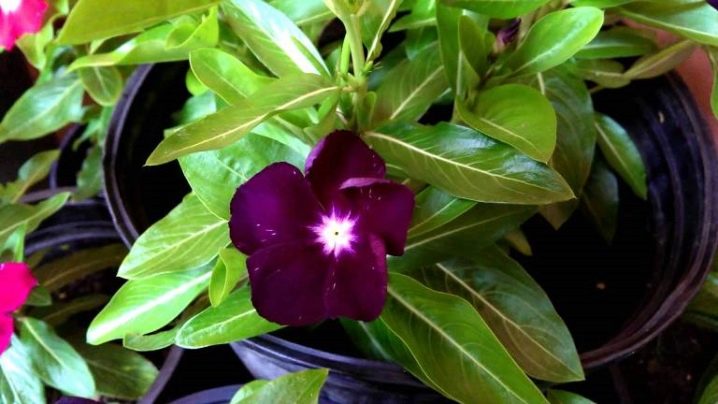
"Pacific Regiment"
Another very popular variety of this culture. It is distinguished by its early and rich flowering. By itself, this variety is unpretentious and does not require complex expensive care. In the conditions of the southern regions, this crop is ideal for growing outdoors.
If it comes to the northern regions, then here she is usually kept in room conditions.
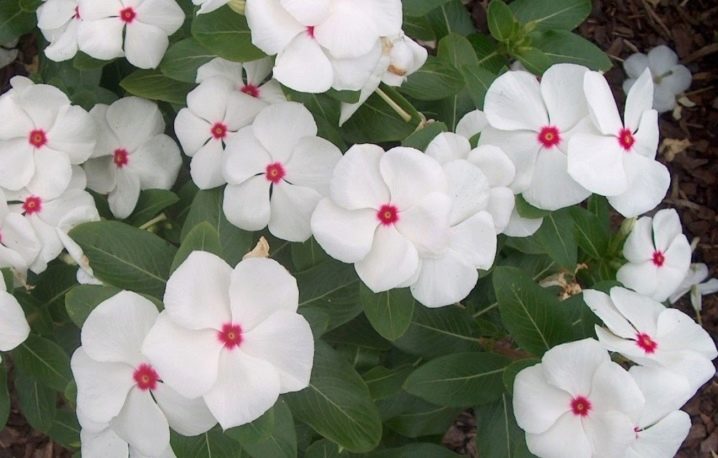
"Sicily"
This is a very beautiful and delicate pink catharanthus. It is distinguished by attractive, as if varnished, leaf blades with characteristic crystal veins.The flowers grow rich and colorful, very similar to phlox. The bush grows neat and small in size.
As a rule, "Sicily" is placed in sunny areas.
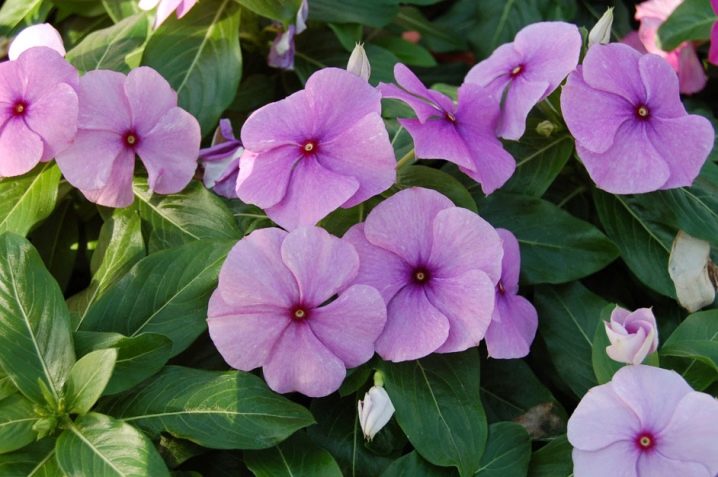
"Courage"
This variety is not a very tall bush with a lot of shoots. Has a shiny dark green foliage. The flowers grow pale pink, dark pink or snow-white. Their diameter usually reaches several centimeters.
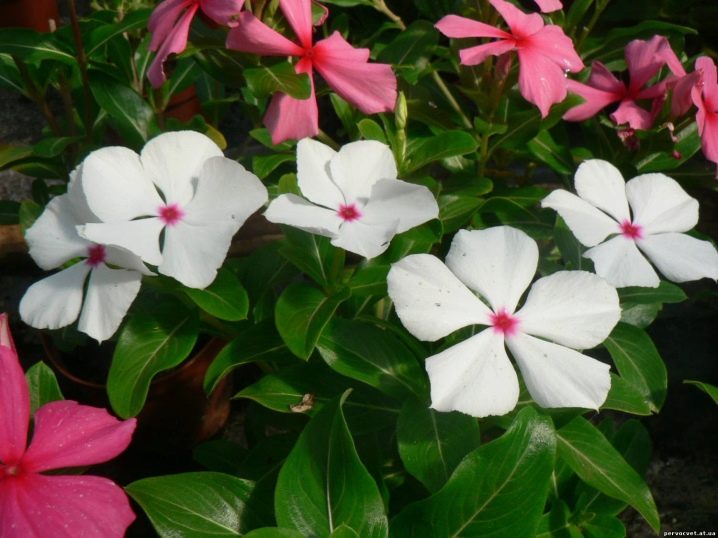
Preparation
Before proceeding directly to planting seeds, it is necessary to carry out a number of preparatory procedures aimed at creating optimal conditions for the future growth of the plant. You cannot neglect them if you plan to grow healthy and beautiful flowers.
To stimulate the growth of seeds, it is recommended to first subject them to a special pre-sowing preparation - it always improves their germination rates.
For this, one of the effective drugs is usually used.
- Epin. This product is diluted at the rate of 3 drops per 100 ml of water. The resulting composition is moistened with seeds for 3 hours before direct planting.
- "Zircon". This solution is made at the rate of 0.025 ml per 100 ml of water. In the resulting product, the material for future planting is soaked for 4 hours just before sowing.
- Succinic acid. It takes 12-24 hours to soak the seeds in this composition. The solution is made in a ratio of 1 g to 1 l of water.
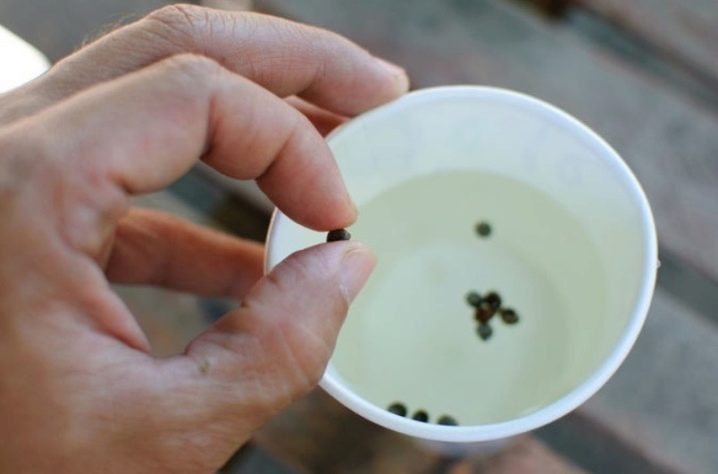
And also catharanthus seeds need other preparatory procedures. Before planting, it is recommended to disinfect them from the appearance of insects and various dangerous parasites. To do this, make a weak solution of potassium permanganate. The seeds are kept in it for no more than 30 minutes. After that, they are transferred to a paper napkin or gauze so that they can dry completely.
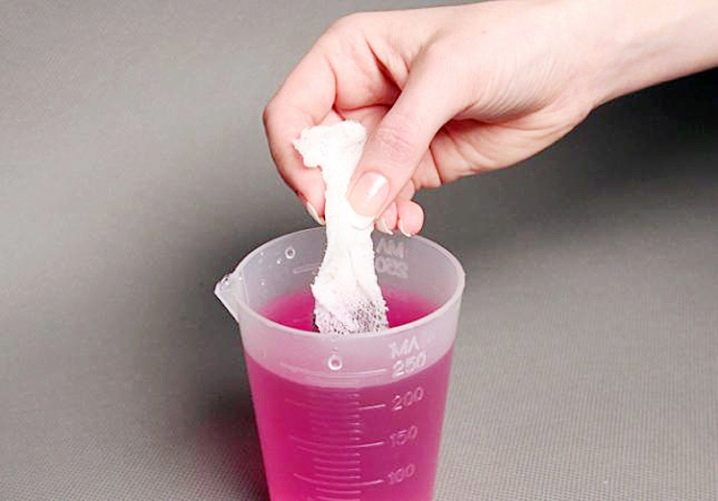
It is very important to correctly select and prepare containers for planting, as well as high-quality soil. To plant a catharanthus, it is recommended to ensure that the soil is:
- loose and airy;
- fertile;
- moisture permeable;
- with an acidity level in the range of 5.5-5.9 pH;
- with moderate salt concentration.
Experienced growers advise purchasing suitable substrates designed for the maintenance of indoor plants.
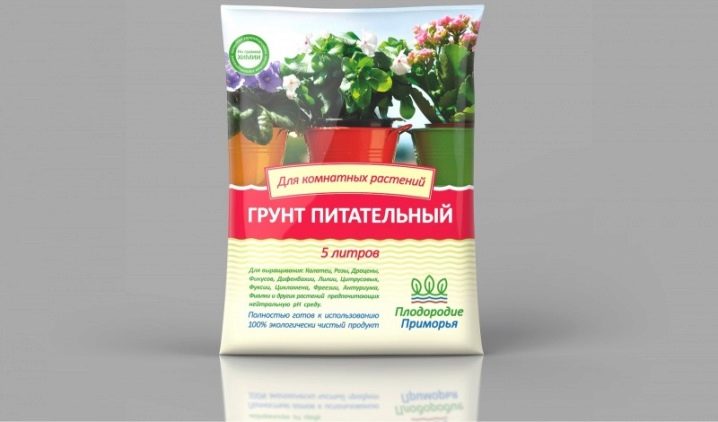
If you prepare the soil on your own, you will need to combine leaf and sod soil in equal proportions. And you will also need to add coarse river sand and a small part of peat to them. All components are disinfected in advance by heating in an oven, or by processing with specialized mixtures such as potassium permanganate. This will prevent the development of various diseases and the appearance of dangerous parasites. To make the soil looser, it is advisable to use Perlite or Vermiculite.
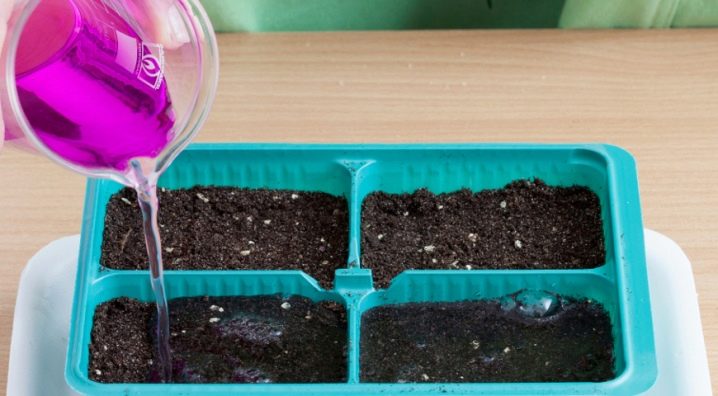
Instead of a substrate, it is allowed to use peat tablets. There is no need to pick culture in them. However, before proceeding with the direct planting of seeds, these tablets must be thoroughly moistened.
It is very important to find a suitable container for the catharanthus. It should be quite large, as this culture develops at a very fast pace and is characterized by a powerful root system.
In no case should it be allowed to overlap the drainage holes in the vessel with root processes.
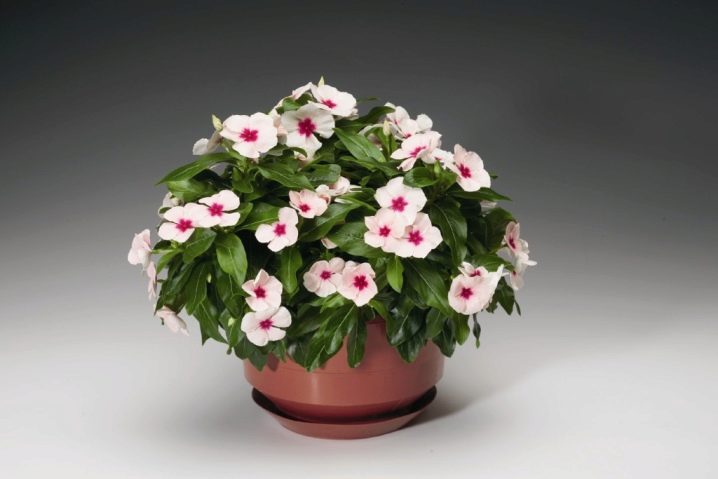
Landing
Katarantus, like any other crop, must be sown correctly. If you follow all the existing rules and act carefully, then you can expect good results, since this plant develops surprisingly quickly.
It is necessary to carefully prepare the planting material for planting seeds. Only if this rule is observed, one can expect from a plant that it will hurt a little and develop more productively.
Sowing catharanthus for seedlings is necessary at the end of February. The seeds should be placed in separate pots first.
If you do not plan to plant seedlings in open ground, but want to use them as "home residents", then you need to prepare a new pot of a suitable size in advance.
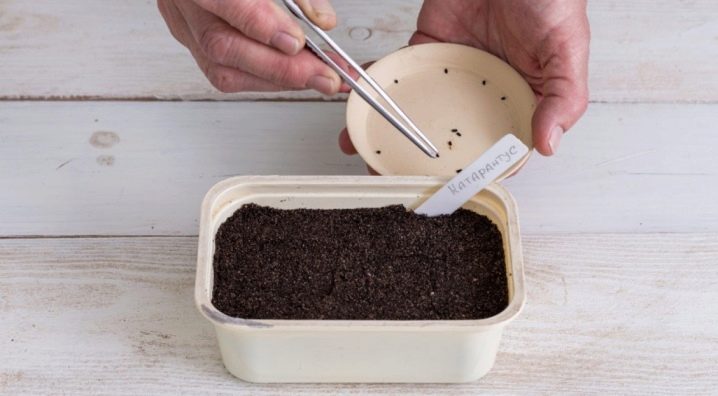
It should be borne in mind that this culture does not like transplantation. You need to add one seed to the cups, placing them in the middle. If we are talking about a full-fledged pot, then here you can bring 3 seeds at once. The planting material will emerge quickly and "amicably".
The same rules should be followed when it comes to planting a catharanthus in open ground (this should be done in May, when the danger of spring frosts has passed). For grown seedlings, it is advisable to find a fairly high flower bed located on the east or west side of the house. Some gardeners prefer to plant the specified crop in large tubs.
It is allowed to take seedlings outside as soon as the morning frosts subside.

Care advice
It is not enough to choose and plant Katarantus correctly. This plant, like any other, requires competent care, without which it will not grow well and will undergo various diseases.
Top dressing
The flowering of the catharanthus will be longer and more luxuriant if the plant is fed correctly and on time. If the culture belongs to the category of annuals, then it should be fertilized no more than once a week. For this, special complexes are used for flowering indoor flowers. They are diluted in clean water for irrigation, based on the instructions that are present on the branded packaging with the product.
You can also use liquid dressings for indoor roses. If the flower is perennial and grows at home, then you will need to feed it a little less often - twice a month will be enough. In this case, it will be necessary to halve the dosage of the introduced components. During the dormant period, when the flowering of the culture stops, feeding does not need to be done at all.
You should not break this rule if you do not want to harm the catharanthus.

Illumination
In order for the seedlings to germinate well, it is recommended to carefully cover it with black polyethylene. You can place a container with seeds in a dark place. As soon as the first shoots appear, the box with shoots will need to be moved to a brighter place. In this case, the polyethylene will need to be removed - it will no longer be useful.
Please note - the lighting must be sufficient and intense.
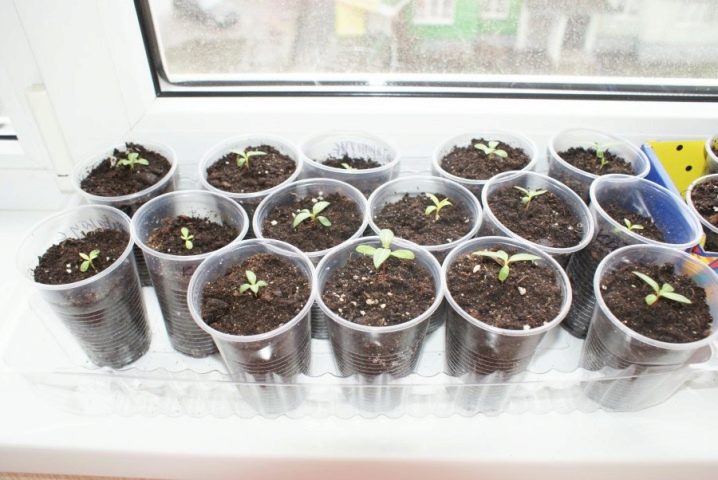
Temperature
For the correct and lush flowering of this plant, you need to provide it with optimal temperature conditions in the room. While the seedlings are only planted and covered with polyethylene, it is desirable to place it in a place where the temperature does not exceed +25 degrees. As soon as the box with seedlings moves to a more lighted place, the temperature will need to be changed - it should be +18.24 degrees.
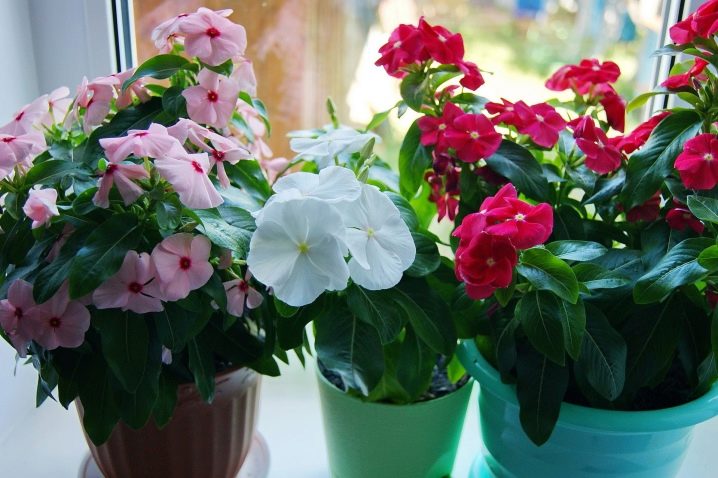
Watering
If you want to grow a healthy and beautiful plant, it is especially important to take care of proper watering. Do not forget that this crop loves moisture most of all, so it is advisable to irrigate it periodically.
But try to immediately get rid of standing liquid, especially if the plant is in a pot. If water accumulates in the pan, it will need to be quickly drained from there.
In a garden, you do not need to fill in the catharanthus - because of this, its roots can rot, and the plant will die. But even before drying, the flower does not need to be brought. Because of this, its leaf blades can begin to curl into small tubes. Of course, this does not mean that the plant has already died, but after that it will urgently need to ensure proper watering.
In cold seasons, watering is reduced.
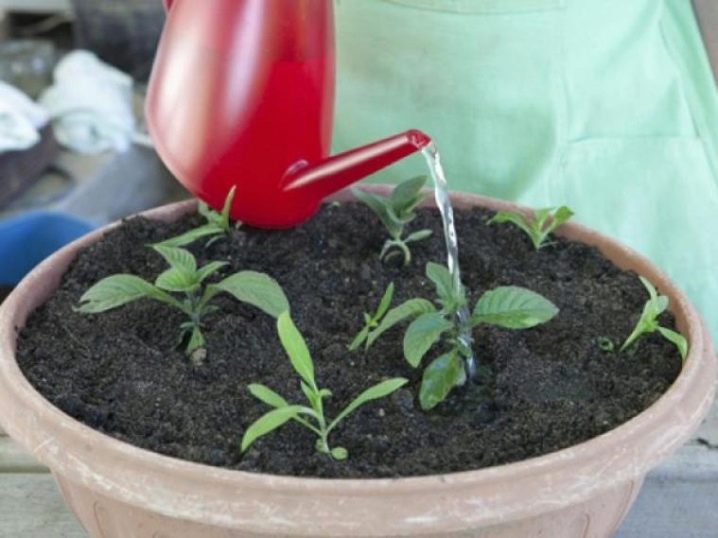
Possible problems
The most frequent pests "attacking" the catharanthus:
- spider mite;
- aphid;
- felt;
- shield.
Catharanthus need to be regularly inspected in order to notice the pests that have appeared on them in time.If aphids are found, you need to wash the flower with soapy water.
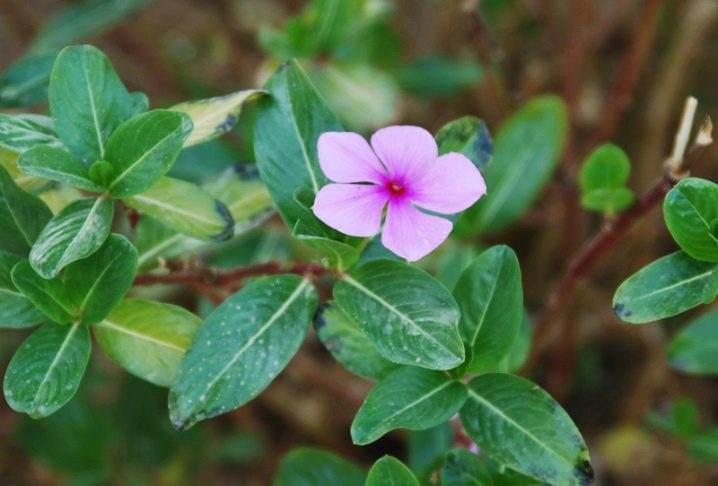
If there is too much light, the leaves will become soft, yellow and matte. In this case, shading the flower or moving it to a less illuminated place will be salvation.
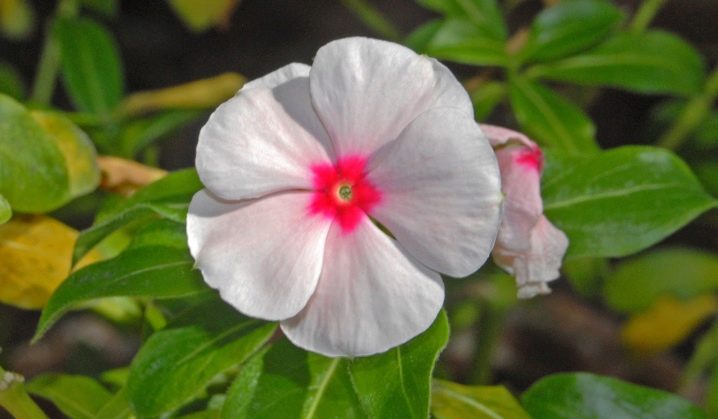
If the plant is kept indoors, it should be regularly sprayed with water - this is an excellent prevention of the most common diseases. As soon as you notice a pest, the flower should be immediately treated with any insecticide.
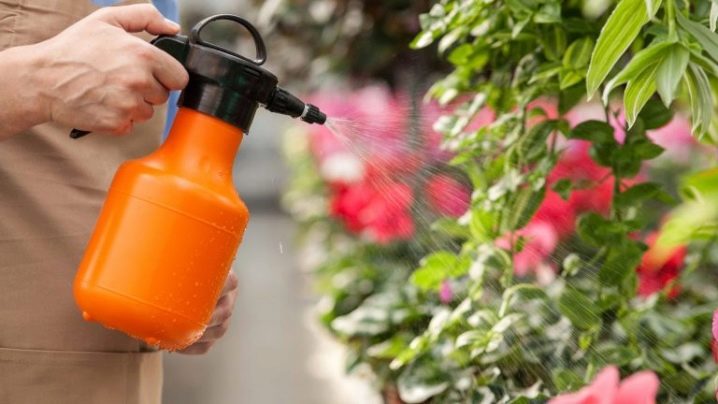
Yellow tips of foliage indicate excessive dryness of the air. It is necessary to spray the plant or install a special air humidifier in the room.

If you notice that a flower you have planted is sick or has become a target for any parasites, you need to act as quickly as possible... Do not waste time and wait for the situation to resolve itself. If the necessary actions are not taken in time, the catharanthus may die.
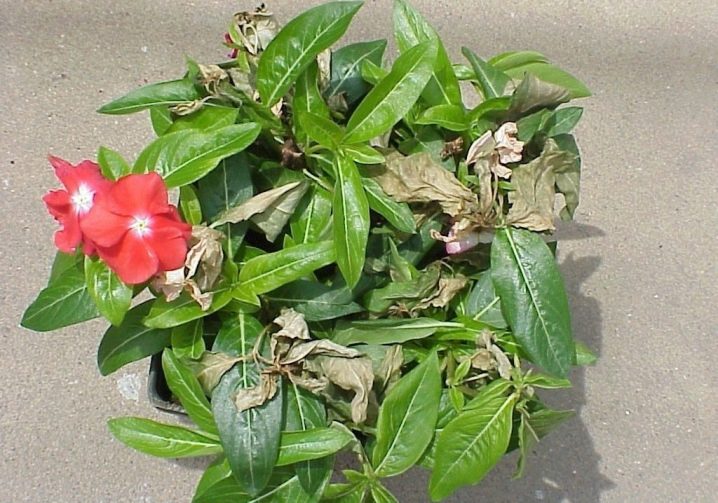
You can get acquainted with some of the features of growing a catharanthus from seeds in the following video.

































































































The comment was sent successfully.